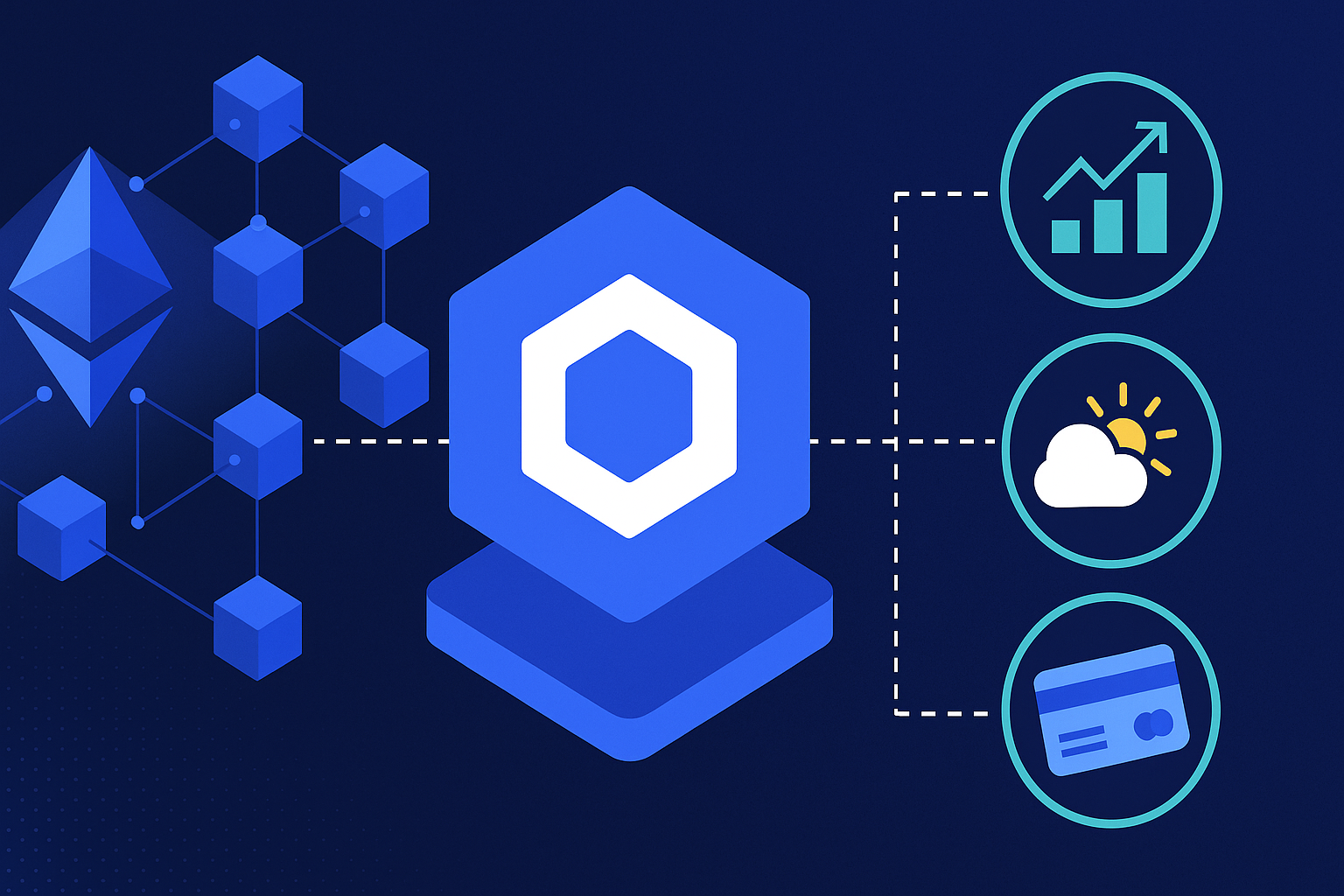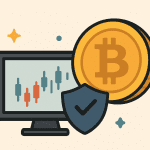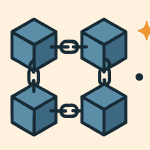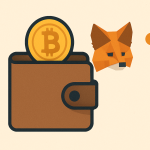If you’ve been learning about crypto and smart contracts, you may have heard of Chainlink. But what does it do, and why is it important?
In this beginner-friendly guide, we’ll explain what Chainlink is, how it works, and how it helps blockchains connect to the real world — all in simple terms.
Contents
The Problem: Blockchains Can’t Access Real-World Data
Blockchains are powerful, but they have one big limitation — they can’t get data from the outside world on their own.
Smart contracts (which are programs on blockchains) need real-world information to work. For example:
-
Crypto prices
-
Weather data
-
Stock prices
-
Sports results
-
Payment confirmations
But blockchains are closed systems — they can’t go online and check a website. This is known as the oracle problem.
The Solution: Chainlink
Chainlink is a decentralized network that provides oracles — tools that bring real-world data to smart contracts on the blockchain.
Instead of trusting one single source (which can be risky), Chainlink uses multiple sources to deliver accurate, secure, and tamper-proof data.
What Is LINK?
LINK is the native token of the Chainlink network. It’s used to:
-
Pay data providers (called oracles)
-
Reward node operators who keep the system running
-
Secure the network through staking (coming soon)
LINK is traded on major exchanges and can also be stored in popular crypto wallets.
How Chainlink Works (Simple Explanation)
Let’s say a DeFi app needs the current price of Ethereum (ETH) to run a smart contract.
Here’s how Chainlink helps:
-
The smart contract requests the data.
-
Chainlink selects a group of trusted oracles.
-
Each oracle sends back the current ETH price from different sources.
-
Chainlink verifies and averages the results.
-
The final, trusted price is sent to the smart contract.
This makes the data decentralized, reliable, and secure.
Why Chainlink Is Important
✅ Trusted by Top Projects – Many DeFi and Web3 platforms use Chainlink, including Aave, Compound, Synthetix, and more.
✅ Decentralized Data – Avoids the risk of fake or manipulated data.
✅ Multiple Use Cases – Not just prices; Chainlink provides weather, sports, event results, and more.
✅ Secure and Reliable – Chainlink has a strong reputation for uptime and accuracy.
Real-World Use Cases
Chainlink isn’t just for crypto prices. It’s used for many things:
-
DeFi apps need prices for trading and lending.
-
Insurance apps use Chainlink to verify weather events.
-
NFT games use Chainlink for random number generation.
-
Real estate and finance platforms use it to confirm data from external sources.
Chainlink connects the blockchain world with the real world in a safe and trusted way.
How to Get and Use LINK
-
Store LINK in wallets like MetaMask, Trust Wallet, or Ledger.
-
Use LINK for governance, staking (soon), or supporting Chainlink-based apps.
If you’re just getting started, you can buy a small amount and follow Chainlink’s development on their official website and Twitter.
Chainlink’s Future
Chainlink is working on staking, where LINK holders can lock up their tokens to help secure the network and earn rewards.
It’s also expanding to other blockchains like Avalanche, BNB Chain, and Solana — not just Ethereum.
Chainlink keeps growing as more smart contracts need real-world data.
Final Thoughts
Chainlink is a key part of the crypto world because it helps blockchains connect to the real world safely and reliably. Without oracles like Chainlink, smart contracts would be limited and less useful.
If you’re interested in DeFi, NFTs, or blockchain tech in general, learning about Chainlink is a great step.




